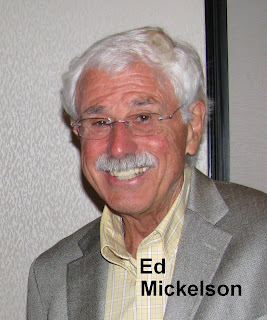The St. Louis Browns were hitting home run after home run at their 25th Anniversary of the St. Louis Browns Fan Club on October 8. As one fan put it, "Those people who were not here don't know what they missed." More than 80 fans - club members, guests, and ball players - heard from former Brown's players, Ned Garver, Ed Mickelson, J.W. Porter and Bud Thomas. Other players present were Roy Sievers and Bill Jennings.
Mike Veeck, son of Bill Veeck, was a featured speaker. Mike gave insight into a family totally dedicated to baseball. Veeck is part owner of 6 minor league teams. He is a consultant and frequent speaker promoting baseball.
Veeck said he called his mother that day to tell her he was speaking to the St. Louis Browns Fan Club. The first thing she said was, “Tell them you’re sorry.” Mike said “For what?” “For moving the team out of St. Louis,” replied mom. Veeck said, “Mom, I was just a kid and didn’t have anything to do with that. It was you guys who moved the team?”
Mike told a story about his dad receiving a call from a fan requesting “the best seats in the house.” Bill Veeck replied, “How about second base. We haven’t used it all year.”
(Mike) Veeck said, “I lived here three years in Sportsman’s Park. When I was invited here, I was a little hesitant. I wasn’t certain what I should say.”
“I walked to the stadium last night and I told my wife, Libby, that the cardinal fans and the people in St. Louis are the best baseball fans in the country. The reason why is when you go to a Cardinal game and you see people wearing hats and shirts from another team, they’re polite. They may razz you all day long, but always polite.”
“My father loved his time here. If it sounds like I’m crazy about my father, I am. My father’s favorite line about St. Louis is, “If as many people who tell me they were there the night I put the midget in were actually there, I’d still be in St. Louis. Thanks for making us feel so welcome.”
..











